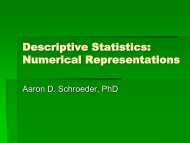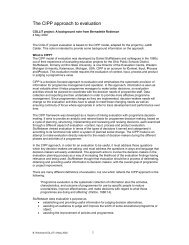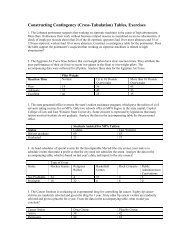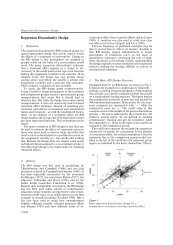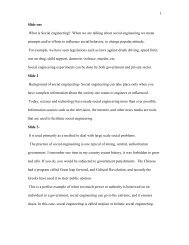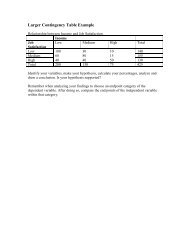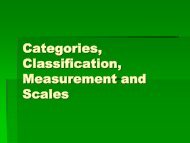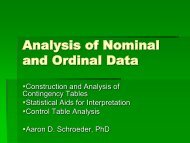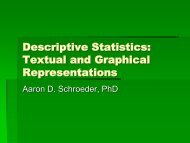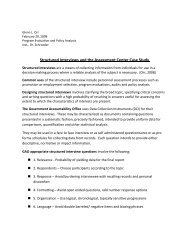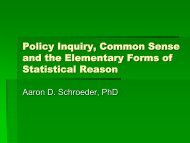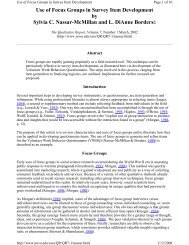The Problem
The Problem
The Problem
Create successful ePaper yourself
Turn your PDF publications into a flip-book with our unique Google optimized e-Paper software.
public. Different constraints are identifiable with each field of application, such as<br />
anthropology and sociology.<br />
This is not to say that we cannot learn from these disciplines. Quite the contrary,<br />
methodological exegesis in these other disciplines is quite developed and we would be<br />
wont to reinvent the wheel. What we do need to do, however, is consider how these<br />
approaches can be modified to work within the constraints of public administration<br />
research.<br />
Our first cut at a methodological solution addressing the point made above, that newer<br />
paradigms of inquiry are mostly qualitative in nature and require that we (as the<br />
inquirer) actually talk to people, is what is referred to as stakeholder analysis.<br />
Stakeholder analysis focuses on the need of the practitioner/researcher to understand who<br />
they should be talking to, as well as why they should be talking to them. Our<br />
interpretation of a stakeholder analysis methodology is designed specifically to be used in<br />
either a critical theoretic or interpretivist research mode and is firmly rooted in an<br />
understanding of the network context of the public administrator.<br />
A Pragmatic Approach<br />
<strong>The</strong> approach to be advocated here places a premium on utility over elegance. That is, it<br />
emphasizes progress over perfection. <strong>The</strong> approach is more an amalgamation of various<br />
tools and approaches than a theoretical doctrine, although it is devised for use by those<br />
sharing a critical and/or constructivist perspective. From this perspective, “it appears less<br />
as a solution, than…as a program for more work, and more particularly as an indication<br />
of the ways in which existing realities may be changed. <strong>The</strong>ories thus become<br />
instruments, not answers to enigmas in which we can rest” (James, 1982: 213). Hence it<br />
focuses on the requirements of the situation. How one chooses to set-up their stakeholder<br />
identification and management system will ultimately depend upon what they want it to<br />
accomplish. An extra-contextual approach to stakeholder identification would simply be<br />
unhelpful (Tennert, 1998).<br />
11



